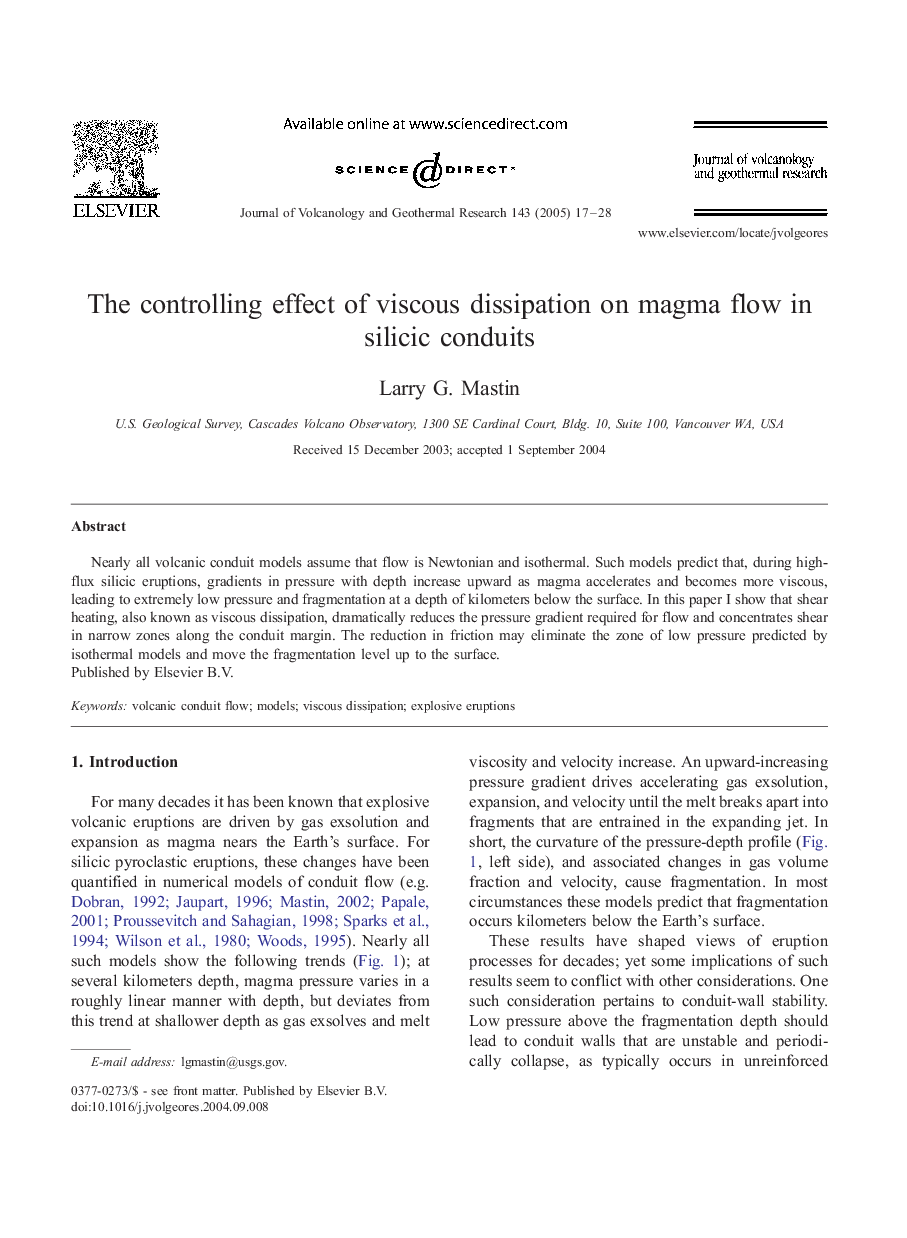| Article ID | Journal | Published Year | Pages | File Type |
|---|---|---|---|---|
| 9530991 | Journal of Volcanology and Geothermal Research | 2005 | 12 Pages |
Abstract
Nearly all volcanic conduit models assume that flow is Newtonian and isothermal. Such models predict that, during high-flux silicic eruptions, gradients in pressure with depth increase upward as magma accelerates and becomes more viscous, leading to extremely low pressure and fragmentation at a depth of kilometers below the surface. In this paper I show that shear heating, also known as viscous dissipation, dramatically reduces the pressure gradient required for flow and concentrates shear in narrow zones along the conduit margin. The reduction in friction may eliminate the zone of low pressure predicted by isothermal models and move the fragmentation level up to the surface.
Related Topics
Physical Sciences and Engineering
Earth and Planetary Sciences
Geochemistry and Petrology
Authors
Larry G. Mastin,
